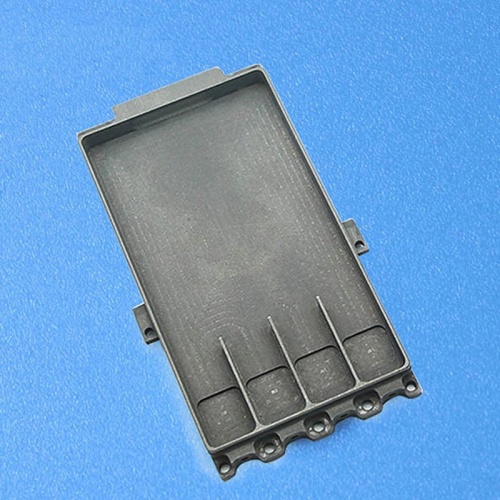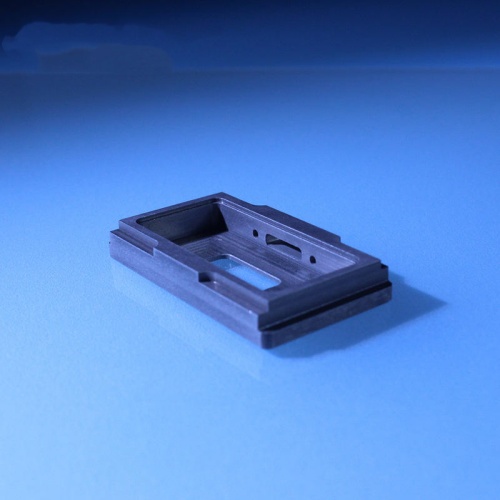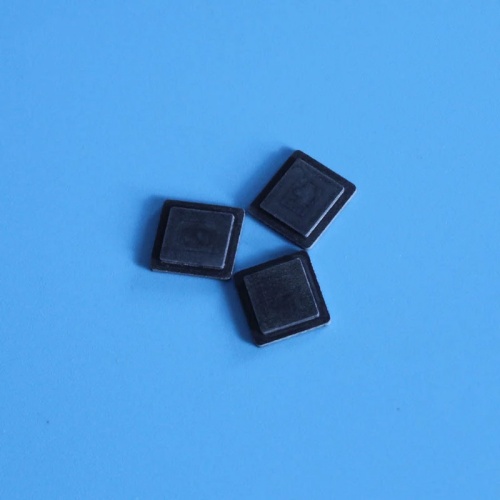What is aluminum based silicon carbide composite material
Aluminum based silicon carbide composite material (AlSiC), also known as aluminum based silicon carbide particle reinforced composite material, is a high-performance composite material composed of aluminum and silicon carbide. This material combines the lightweight properties of aluminum with the high hardness and wear resistance of silicon carbide, exhibiting a variety of superior physical and mechanical properties.

Composition and preparation
Aluminum based silicon carbide composite materials are usually reinforced by adding an appropriate amount of silicon carbide powder, with aluminum alloy as the matrix material. Silicon carbide is a non-metallic ceramic material made by high-temperature smelting of raw materials such as quartz sand, petroleum coke (or coal coke), and sawdust (salt is required to produce green silicon carbide) in a resistance furnace. It has extremely high hardness and wear resistance, and can maintain stability in high-temperature environments. By combining silicon carbide with aluminum alloy, the advantages of both can be fully utilized to improve the overall performance of the material.
The preparation methods of aluminum based silicon carbide composite materials mainly include powder metallurgy, melting, and in-situ reaction synthesis. Powder metallurgy is the most commonly used method, which involves mixing silicon carbide powder with aluminum powder and preparing composite materials through processes such as pressing and sintering. The melting method is to melt aluminum at high temperature, then add silicon carbide particles or fibers, and prepare composite materials through processes such as stirring, solidification, and heat treatment. The in-situ reaction synthesis method involves adding silicon and carbon to the aluminum melt, and controlling the reaction conditions to generate and evenly distribute silicon carbide in the aluminum matrix.

Performance characteristics
Aluminum based silicon carbide composite materials have various superior properties:
High strength and hardness: Aluminum alloy, as the base material, has high strength and rigidity, and can withstand large loads; The extremely high hardness of silicon carbide gives aluminum based silicon carbide excellent wear resistance and scratch resistance.
High temperature stability: Silicon carbide has good high-temperature stability and can maintain the stability of material properties in high-temperature environments.
Lightweight: Compared to pure aluminum alloys, aluminum based silicon carbide has a lower density and can achieve lightweight design, which is particularly important in fields such as aerospace and automotive manufacturing.
Corrosion resistance: Aluminum based silicon carbide has good corrosion resistance and can be used in some harsh environments.
High thermal conductivity: Aluminum based silicon carbide composite materials have high thermal conductivity, which is beneficial for heat dissipation and temperature control.
Low coefficient of thermal expansion: This helps reduce thermal stress, improve material reliability and service life.

Application area
The superior performance of aluminum based silicon carbide composite materials makes them widely applicable in multiple fields:
Aerospace: The high strength, high hardness, and lightweight properties of aluminum based silicon carbide make it an ideal material for the aerospace industry. It can be used to manufacture key components such as aircraft fuselage and engine parts, improving the performance and reliability of aircraft.
Automotive manufacturing: In the automotive field, aluminum based silicon carbide composite materials can be used to manufacture lightweight body parts, engine components, etc., to improve the performance and fuel efficiency of automobiles. This helps to reduce the weight of cars, lower fuel consumption and emissions, and is in line with the current trend of environmental protection and energy conservation.
Electronic and electrical: Aluminum based silicon carbide composite materials are also widely used in the field of electronics. It can be used to manufacture electronic packaging materials, printed circuit boards, etc. to improve the performance and reliability of electronic products. Especially in microwave, millimeter wave packaging, and high-power device packaging, aluminum based silicon carbide composite materials have unique advantages.

Processing difficulty and solutions
Although aluminum based silicon carbide composite materials have various superior properties, their processing difficulty is relatively high. This is mainly due to the high hardness of silicon carbide, which leads to severe tool wear and increased processing costs. Therefore, when choosing machining tools, priority should be given to tools with smooth cutting surfaces, sharp edges, and high hardness, such as PCD tools. At the same time, processing equipment should also have strong rigidity to prevent spindle runout from affecting processing accuracy.
Aluminum based silicon carbide composite materials, as a high-performance composite material, have broad application prospects in aerospace, automotive manufacturing, electronics and electrical fields.
PREVIOUS:Why modify aluminum nitride powder
NEXT:What are the applications of aluminum based silicon carbide composite materials
CATEGORIES
LATEST NEWS
- Zirconia Ceramic Rod Custom...
- High-temperature resistance...
- What is the wear resistance...
- What is the hardness of cer...
- Aluminum oxide ceramic cust...
- What are the main aspects o...
- What are the mechanical pro...
- Thermal properties of zirco...
- What properties should be c...
- What are the mechanical pro...
